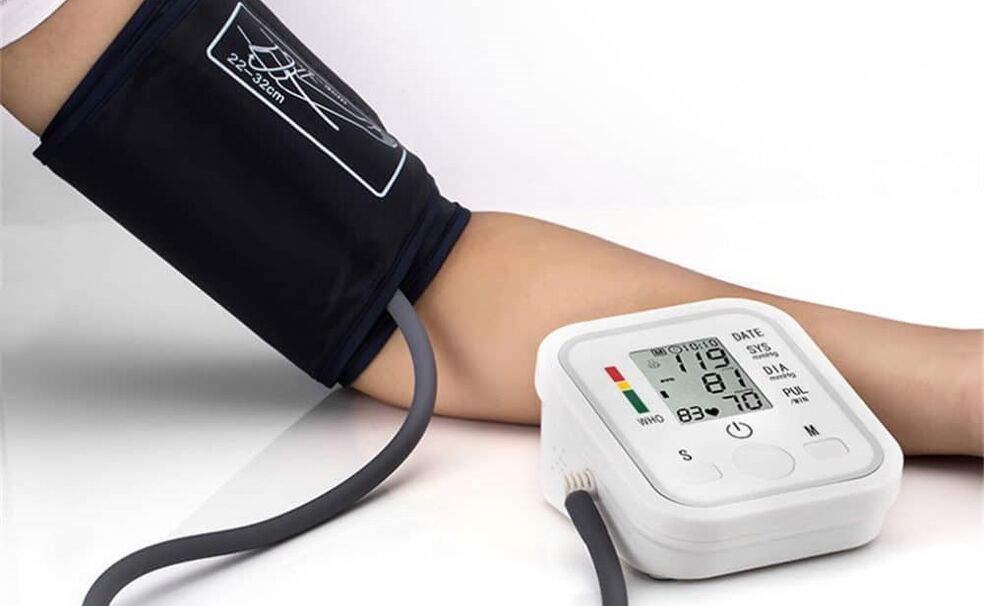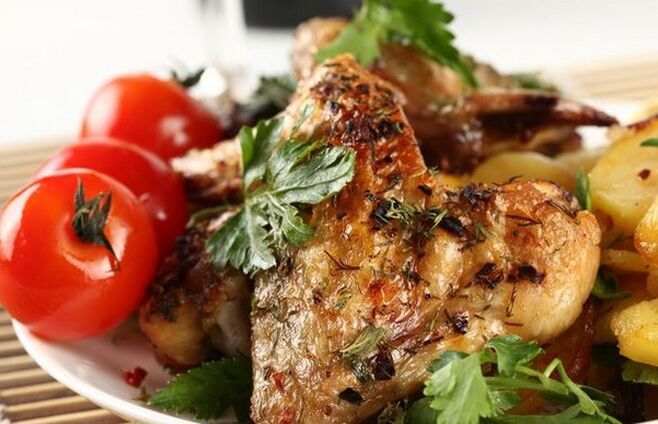The third population of the globe has signs of high blood pressure. The pressure with high blood pressure causes stenosis and vascular damage and sometimes a hemorrhagic heart attack. Therefore, even healthy people are extremely important to know what pressure is, what affects which indicators can be regarded as a norm, which numbers on the tonometer should serve as a signal for the start of treatment.
The essence of the concept
The blood pressure is due to the performance of its effect on the main and peripheral vessels. Print indicators are directly dependent on several factors:
- Vascular elasticity;
- Heart contractions;
- The blood volume that was pumped with heart for a certain period of time.
The value of blood pressure (blood pressure) is common to write in the form of a relationship in:
- The upper number, great systolic pressure (with a contraction of the heart);
- The lower digits, small diastolic pressure (between heart contractions).
Blood pressure can change - with a change in the body position, in physical exercises, with nervous overload, in peace or after eating. If a person has no health problems, the pressure is stabilized after a short time. In the event of high blood pressure, its increased indicators are preserved for some time. Sharp blood pressure fluctuations are observed in hypertensive patients. Normally after sleep it can rise after eating and then lose weight. Evening printing indicators usually cross the morning and sometimes they fall strongly at night.

When analyzing blood pressure indicators, more value is usually attached to the upper number. It is an increased systolic pressure that the main risk factors for the development of cardiovascular pathologies are over 50 years old. In the vast majority of people, it increases over the years that the main approaches lose their elasticity and uncover atherosclerotic plaques.
Norm and pathology
The blood pressure is an individual indicator, depending on the age, the surrounding conditions, the accompanying pathologies and even time of day. But there are averaged medical indicators. After the doctor found out what the patient has, the doctor is determined - hypertension or a variant of the norm.
Blood pressure in patients over 18 years old
| Pressure | Indicators, mm ed. Art. | Indicators, mm ed. Art. |
|---|---|---|
| Systolic | Diastolic | |
| Optimal | Less than 120 | Less than 80 |
| Normal | Up to 130 | Up to 85 |
| Usually large | Up to 140 | Up to 90 |
| 1 high pressure degree | Up to 160 | Up to 100 |
| 2 high blood pressure degree | Up to 180 | Up to 110 |
| 3 high blood pressure rate | Over 180 | Over 110 |
| Isolated systolic hypertension | Over 180 | Less than 110 |
The systematic pressure control will help to avoid the serious consequences of high blood pressure, since pathological changes in the indicators are seen in good time.
Reasons for deviation from the norm
The blood pressure never changes without reason. His fluctuations can be caused by diseases of cardiovascular, digestible, genitural system and traumatic brain injuries. But not always factors that provoke the change are due to pathologies. The growth of blood pressure indicators often occurs:
- allergic reactions;
- stressful situations;
- Hormonal mistakes;
- Smoke;
- Alcohol abuse;
- Weather dependency;
- Take some drugs;
- Revision;
- Dehydration;
- Eat fatty food;
- excessive amount of salt consumed;
- Hypodynamics or on the contrary, physical stress.

The reason for increasing pressure can have age -related changes in the body and hereditary disposition.
Clinical manifestations
The increased blood pressure is very striking. Visual symptoms of pathological changes are more used:
- Acute headache (usually in temples and behind the head), often accompanied by vomiting of reflexes;
- Reddening of the skin (sometimes vessels appear);
- Pronounced weaknesses, noises in the ears, flies in front of the eyes;
- Reddening of eye proteins (sometimes violation of visual acuity);
- Dyspnea;
- Pain behind the sternum;
- Chills;
- Insomnia;
- Heart heartbeat;
- Increased sweating.
Consult a doctor with such symptoms. Early high blood pressure is dangerous asymptomatic. Sometimes a person doesn't even think that he can have increased pressure.
With increased pressure in the diet, products that can effectively reduce fats and prevent thrombosis.
Diagnosis of changes
After 20 years it is recommended to measure the pressure during the investigations. If it is higher than the norm, the doctor prescribes additional tests. A time with high indicators does not always indicate the presence of high blood pressure. The disease is diagnosed when increased indicators are observed in several successive examinations, and if they are preserved after three months of compliance with the instructions of the doctor to adapt the lifestyle.
Self -diagnosis on the pulse
Without a medical device, it is impossible to determine pressure indicators precisely, but the presence of negative changes can be assumed by the impulse. By using the ring and index fingers to the carbon artery, the number of heart bends should be calculated in 30 seconds and the resulting illustration should be multiplied by two (the number of strokes per minute). The pulse corresponds to 60-80 shots than normal. With increased pressure, the pulse can be felt without difficulty. If there is a heart rate knife, you can use it.

With one tonometer
Various types of tonometers are used to measure the blood pressure precisely. The structures of the device differ in the principle of action. Mercury tonometers were replaced by pneumatic and then electronic devices. The latter can easily use any person who does not even have medical training. They are characterized by compactness, accuracy and user -friendliness.
Typically, such tonic not only show systolic and diastolic pressure indicators, but also the pulse frequency. At the same time, the previous measurements will "remember", with experts monitor the dynamics of changes in the blood pressure indicators in every specific patient.
Arimsision rights
The measurement of blood pressure must be addressed with maximum attention. This applies to both specialists and the patients themselves who independently monitor the pressure degree. There are certain rules:
- The day before the measurement, you have to give up tonic drinks and smoke.
- On the day of the measurement, you should not use eye and nose waste.
- Measure the pressure half an hour after eating;
- Before applying the tonometer cuff, the patient should take a comfortable position by placing a relaxed hand on a flat hard surface.
- The cuff must be placed in the middle of the shoulder. Under his edge, 2, 5 cm should be deepened by the elbow. Air pipe should lie along the center line of the shoulder;
- Between the cuff, which is on the same level with the heart, and the shoulder should be left the gap into which the finger is slightly placed.
- Absolutely calm should be maintained during tonometer operation.
First, experts recommend measuring the pressure on both hands, then only on the one that "publishes" the highest indicators. If the measurement is carried out outside the walls of the medical institution, the patient is recommended to carry out a "accounting notebook" and enter the day, the time and measurements. How often to carry out measurements determines the doctor.
Possible consequences
Hypertension with hypertension is subject to hypertensive crises - sudden jumps from indicators to critical. Such states provoke a strong expansion of blood vessels that can break. In a number of episodes, a distinction is made between high blood pressure:
- Problems with eyes (reduction in visual acuity, bleeding);
- Kidney failure;
- Ischemia of the heart;
- Heart failure;
- Angina Pectoris;
- Stroke;
- Infarction;
- Impotence;
- Swelling of light and brain;
- Death.
At the risk of a peeling aneurysm by the aorta, it is recommended to put the pressure down as soon as possible. And if brain disorders, this should be done without hurry, otherwise they will worsen.
High blood pressure often causes disabilities and even the patient's death.
House reaction
With a hypertensive crisis (the upper pressure over 200 mm Hg), you urgently need to call a team of hospitals and take measures before his arrival to eliminate the symptoms. You can act independently with a moderate increase in pressure.
Warning measures
If there are signs of increased pressure, it is necessary to measure its indicators. Headache, nausea, weakness can occur for other reasons. If the pressure is really increased, it follows:
- Safety size, dimming and ensure silence (including at work);
- Offer access to the fresh air;
- lie down, lift your head (at work, if there is no way, you sit comfortably);
- Make breathing exercises (diaphragm pressure focuses on exhalation);
- Massage the collar zone and head (it is desirable that relatives or friends do this);
- Drink a diuretic (parsley, lingonberry, green or kidney tea, rosehip).
Such measures slowly lower the pressure and rather prevent the development of complications. If you don't help, you have to contact a cardiologist.
Faster effect
Patients with an active lifestyle are often faced with the problem of rapid pressure reduction. Medicines can do this, but they should be used carefully - to avoid overdose, reduce pressure and other complications too quickly. The lawyer's police officer must prescribe medication. Pressure quickly and safely reduces the pressure:
- Peace;
- Cooling compress on the head;
- Warm baths for limbs (not hot! ). You can use a container with water or a heating pillow, mustard.
- Salze Phytochai (Balerian, mother herb, chamomile, mint, lemon balm).
In the absence of the expected effect, the measures listed are supplemented with medication.
Homemade first -Aid kit
With regular problems with the pressure in the composition of the house medication cabinet, special medications should always be.
The lack of medication can be compensated for by using a "constant" drug, but its effect will only be strange after an hour or two after taking it. Accepting pharmaceuticals follows:
- Use only the funds prescribed by the doctor;
- Do not mix medication;
- Dissolve "emergency supply tablets" and do not swallow;
- Take the medication lying (after taking another 30 minutes stay in a horizontal position). If necessary, you should get up slowly.
When accepting medicines, it is necessary to pay attention to contraindications and side effects.
Inevitable restrictions
With increased pressure to avoid the development of negative consequences, certain restrictions must comply with:
- Avoid increased physical activity within 24 hours after stabilizing the pressure.
- Avoid psycho -emotional overload, whereby the stressful situations occur inevitable.
- Refuse the use of alcohol, kebein -containing drinks and smoking.
It should be excluded from the diet for high -fat and salty foods (smoked meat, canned foods - including). After normalizing the pressure for a few days, the amount of liquid used should be limited.
The treatment of high blood pressure depends on the type of increased pressure and the phases of the pathological process. It is possible to use combined and monotherapy. After thorough diagnosis and prescription of medication, the cardiologist will give recommendations to maintain normal printing and for measures that are required when an increase.





























